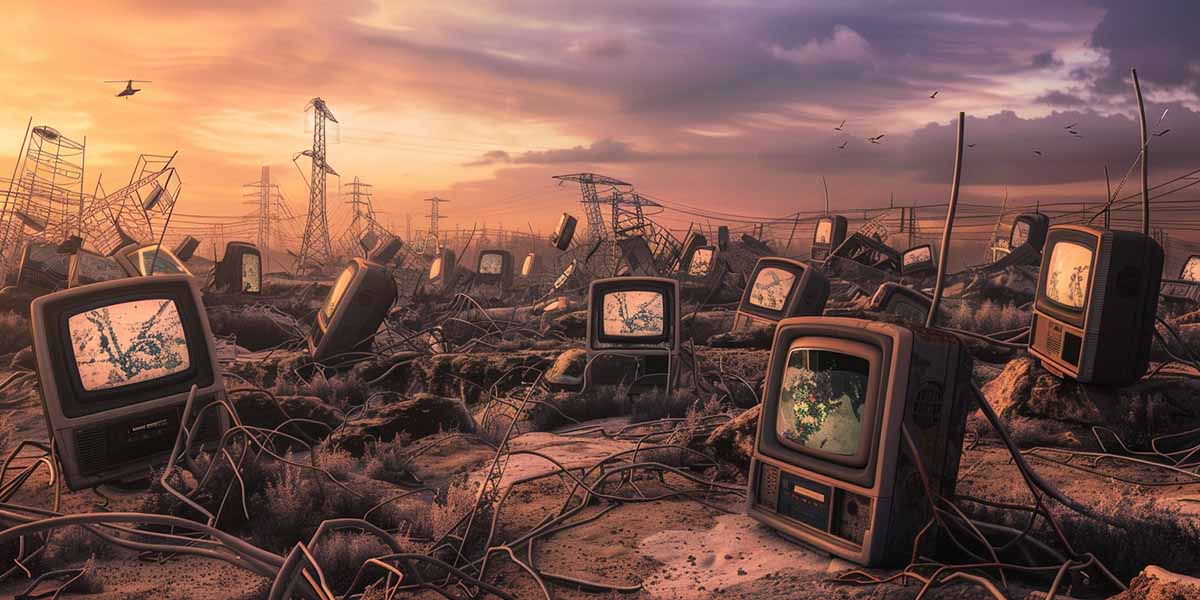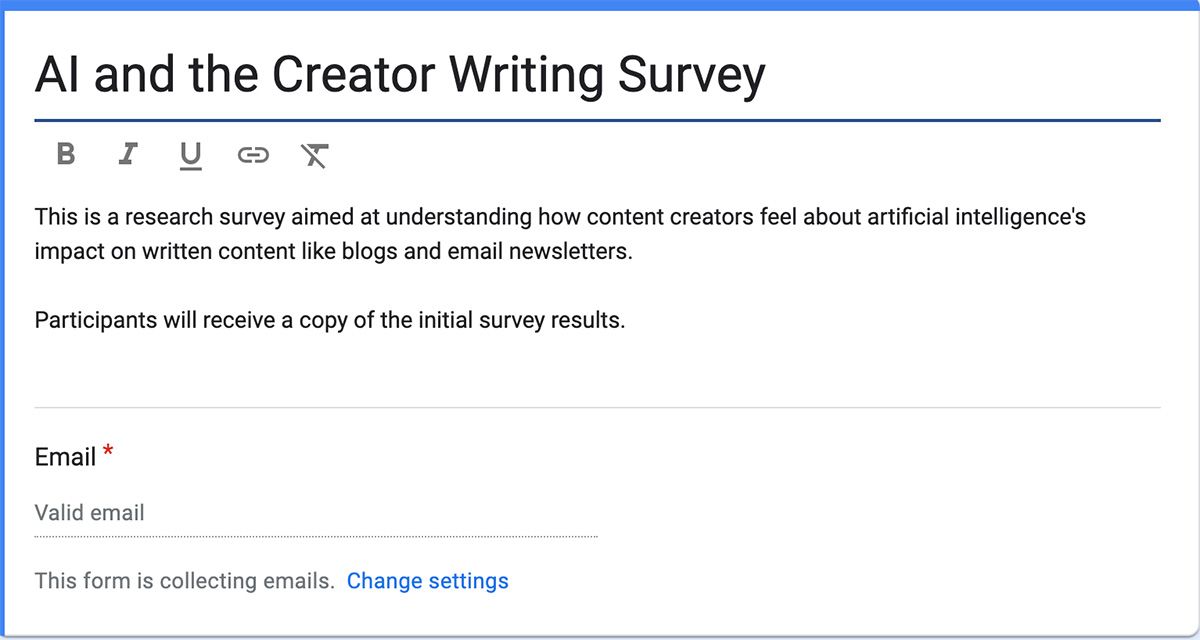Will Enshittification and The Dead-internet Theory Bankrupt Content Creators?
Should writers worry that app decay and AI proliferation will make it hard to earn a living as a content creator?

What if a pair of powerful forces akin to technology's version of the second law of thermodynamics had the potential to kill your content business? Worse still, what if those forces damaged the entire creator economy?
Melodrama aside, this is what Reddit user Ryanopoly implied with a July 2024 post titled "How will your blog compete against Enshittification and The Dead Internet Theory in 2024 and beyond?"

"How do you plan on competing in a world fast approaching total enshittification, and is it even possible to grow a blog to any meaningful size whatsoever in 2024 and beyond?" wrote Ryanopoly.
Enshittification
For the unfamiliar, journalist and blogger Cory Doctorow invented the term enshittification in 2022 to describe the phenomenon of online platforms and services gradually degrading in quality over time.
Enshittification suggests that social media platforms and software solutions initially offer value to attract users and content creators, but over time, these platforms introduce more intrusive ads, manipulate algorithms for profit, and de-emphasize organic reach, making the user experience worse.
Doctorow reiterated the concept in a 2023 article, "Tiktok's enshittification."
"Here is how platforms die: first, they are good to their users; then they abuse their users to make things better for their business customers; finally, they abuse those business customers to claw back all the value for themselves. Then, they die," wrote Doctorow.
"I call this enshittification, and it is a seemingly inevitable consequence arising from the combination of the ease of changing how a platform allocates value, combined with the nature of a 'two-sided market,' where a platform sits between buyers and sellers, holding each hostage to the other, raking off an ever-larger share of the value that passes between them," Doctorow concluded.
The Dead-internet Theory
Dotorow's enshittification pattern criticizes companies like Amazon, Facebook, Google, TikTok, and Shopify and is generally believed to hold at least some truth. In contrast, the dead-internet theory is often filed under the heading of conspiracy theory. But is it one?
The theory argues that while the internet began as a community of humans sharing manually created content, since at least 2016, the vast majority of what we read online has been artificially generated. What's more, many site visitors are also non-human algorithms.
Thus, the internet is dead in two ways. First, online traffic is "fake," and second, some portion of online content is synthetic.
Bot Traffic
As an example, in a December 2018 New York Magazine Intelligencer article about digital advertising fraud and fake content, Max Reed wrote, "Studies generally suggest that, year after year, less than 60 percent of web traffic is human; some years, according to some researchers, a healthy majority of it is bot."
A different sort of bot is also impacting email newsletters. In fact, thanks to the combination of spam and privacy protection, an estimated 20% of all email newsletter opens are bots.
Synthetic Content
An often miss-cited 2021 report from Manon den Dunnen, a strategic specialist on digital transformation for the Dutch National Police, included an anecdote that read, "Experts believe that within six years, 90% of the online content will be synthetic."

While 90% of online content seems high, some amount is synthetic, meaning AI-generated or, at the very least, AI-influenced. As individuals, businesses, and organizations add volumes of non-human content to the online world, the percentage of human compositions decreases.
Problems for Content Creators
If enshittification is a real pattern, bot traffic is an epidemic, and AIs like ChatGPT are writing most new internet content, it is easy to understand why Ryanoploy is concerned about content creation. Platform decay and a non-human internet represent potentially severe problems for content creators.
Reduced Organic Reach
Trapped in the enshittification pattern, social media networks, search engines, and newsletter platforms may limit content's organic reach, pushing creators to pay for visibility, driving up costs, and reducing profit margins for creators who rely on organic traffic or growth.
A pessimist might argue that paid recommendations in the email newsletter industry are an early example.
Increased Competition
Creator platforms are hungry to add more and larger content creators. It behooves social media networks, blogging solutions, and newsletter platforms to keep adding "customers" who must inevitably compete with each other.
The 897th cryptocurrency newsletter on Substack must compete with every other author on the platform. Those same human content creators will be slugging it out with AI content, too.
Increased competition is already impacting newsletter sponsorships and blog advertising.
Trust
While this example is not directly related to blogging or writing a newsletter, I was shocked recently when a publisher I have worked with for years rejected a freelance article I had written.
The article was based on a conversation I had with an unnamed source. I wrote it without AI's help other than asking ChatGPT to generate a Markdown table showing some of the data I had reported.
The publisher refused the article, saying that when he put my working title into an AI, it generated an outline similar to my main points. In spite of years of history together, he didn't trust me in the age of AI writing.
Bloggers and newsletter authors could have the same problem. Will readers trust the content they produce?
Paul Saffo Might be More Optimistic
Ryanopoly certainly has some valid concerns about the future of online content creation, especially in the professional sense — if you are trying to make a living as a content creator.
Before we become too concerned, however, let's remember why the creator economy exists. It is meant to attract and hold attention.
Futurist Paul Saffo has been describing the creator economy since at least the late 1990s and, according to several sources, coined the term.
In an excellent presentation —which is available on YouTube— Saffo explains that "economies" arise to address scarcity.
- In the early 20th century, the industrial economy addressed the scarcity of manufactured goods. The assembly line and mass production reigned.
- By the 1950s, toasters, automobiles, and abundant consumer products were widely available. So, the consumer economy was born to address the scarcity of desire. By 1958, the first credit card was released, and, according to Saffo, companies focused on marketing rather than production.
- In the same way, the creator economy addresses the scarcity of attention.
In the video, Saffo references Herbert A. Simon, a political scientist, who said in 1971, "A wealth of information creates a poverty of attention and a need to allocate that attention efficiently among the overabundance of information sources that might consume it."
While attention-getting as an end could undoubtedly be construed negatively, the scarcity of attention is also a positive counter-point to Ryanopoly's laments.
If AI doubles, triples, or quadruples the amount of content available online, information overload will become worse, not better. The glut of images, videos, and posts will make genuine attention more valuable.
Content creators have more potential to attract and keep attention than any other segment of the internet society. They are the engines of attention that power the creator economy.
Put another way, content creators have the potential to attract, engage, and retain an audience's attention.
How to Succeed
The way to overcome the concerns Ryanopoly raised is to do precisely what many of the most successful content makers have already done.
- Produce good content that is useful, informative, or entertaining, wherein being useful is the most important. The most successful long-term creators are really teachers of a skill, habit, or concept.
- Don't rely on a single platform. Content creators must own their audience. Do not trust Instagram, TikTok, or their ilk. Every business should have multiple income streams across a variety of platforms. These platforms ought to include an email list and a website or blog.
- Build a community. Whenever possible, have direct relationships with your audience in a private community that is not running on a social media platform.
- Use the tools available. AI is not necessarily an enemy. Even AI-generated information could be of great value to automate or improve some workflows or expand reach. For example, a content creator who speaks and writes English can employ AI to translate blog posts into Chinese and reach a new audience.
How Do You Feel?
Now that you have just read more than 1,300 words about enshittification and the dead-internet theory, we hoped you would take a short survey to let us know how you feel about AI and content creation.

This survey does require your email address. It is our way of both keeping the results authentic and offering the initial results to anyone who participates. We may also reach out to request interviews with some respondents.